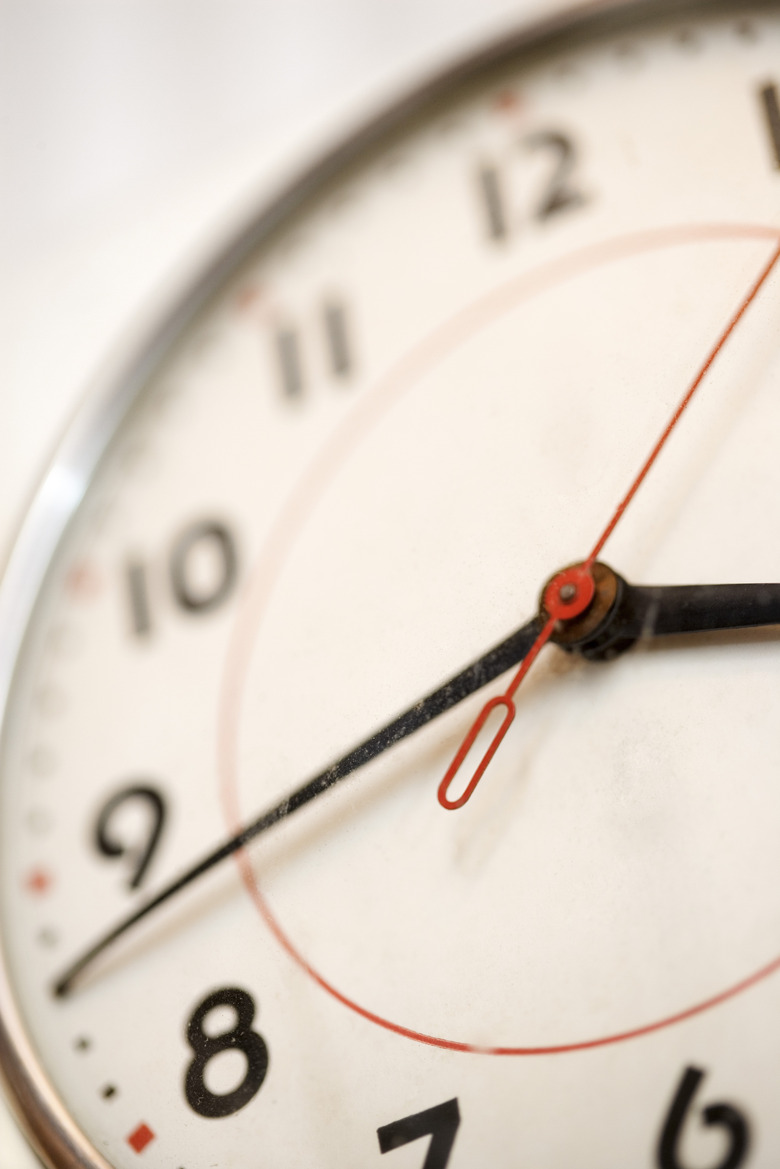DIY Very Simple 60-Hertz Oscillator With A Quartz Circuit
A simple do-it-yourself 60 Hertz quartz oscillator won't be simple if you try to build it with a 60 Hertz quartz crystal, because there aren't quartz crystals that will generate a 60 Hertz frequency. When designers want to create a non-standard frequency, such as 60 Hertz, they use a high-frequency quartz crystal and a frequency divider. One very simple DIY implementation is to use a 3.58 MHz crystal and a 3.58 MHz to 60 Hz frequency converter chip.
Step 1
Insert the ELM 440 3.58-to-60 Hertz frequency converter chip into your electronic breadboard. Wire the supply voltage (pin 1) of the ELM 440 to the breadboard's power bus. Wire the ground pins (pins 5 and 8) of the ELM 440 to the breadboard's ground bus.
Step 2
Insert the 3.58 MHz quartz crystal into the breadboard. Wire one end of the crystal to pin 2 of the ELM 440 and the other end to pin 3.
Step 3
Insert a 27 picofarad capacitor into the breadboard. Wire one end to pin 2 of the ELM 440 and the other end to the breadboard's ground bus.
Step 4
Insert another 27 picofarad capacitor into the breadboard. Wire one end to pin 3 of the ELM 440 and the other end to the breadboard's ground bus.
Step 5
Insert a 1 microfarad capacitor into the breadboard. Wire one end to pin 1 of the ELM 440 and the other end to the breadboard's power bus.
Step 6
Connect the power supply's positive terminal to the breadboard's positive supply bus and the power supply's negative terminal to the breadboard's ground bus.
Step 7
Turn on the power supply and adjust the power supply's voltage level knob until the power supply display reads 5 volts.
Things Needed
- Electronic breadboard
- ELM 440 60 Hz Generator
- 27 picofarad capacitor (2)
- 3.58 MHz crystal quartz oscillator
- 0.1 microfarad capacitor
- Power supply (5 Volts)
TL;DR (Too Long; Didn't Read)
If you want a visual way to show that your oscillator is working, divide the output of the ELM 440 with a divide by 60 frequency divider and connect a light emitting diode to the frequency divider's output (don't forget the current limiting resistor). The light emitting diode should blink on and off at a rate of 60 cycles per second after you power on.
Warning
Improper use of electronic equipment and components can result in fire, serious injury or death. Always work under the supervision of a safety certified electronic technician or electronic engineer. Obtain an electronic safety certificate before you work with electronic equipment and components.
Cite This Article
MLA
Stansberry, Mark. "DIY Very Simple 60-Hertz Oscillator With A Quartz Circuit" sciencing.com, https://www.sciencing.com/diy-very-simple-60hertz-oscillator-quartz-circuit-12057318/. 24 April 2017.
APA
Stansberry, Mark. (2017, April 24). DIY Very Simple 60-Hertz Oscillator With A Quartz Circuit. sciencing.com. Retrieved from https://www.sciencing.com/diy-very-simple-60hertz-oscillator-quartz-circuit-12057318/
Chicago
Stansberry, Mark. DIY Very Simple 60-Hertz Oscillator With A Quartz Circuit last modified March 24, 2022. https://www.sciencing.com/diy-very-simple-60hertz-oscillator-quartz-circuit-12057318/
